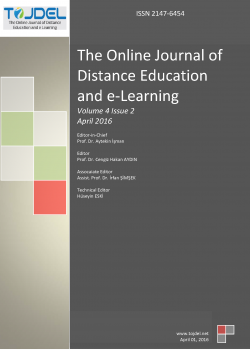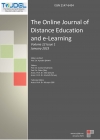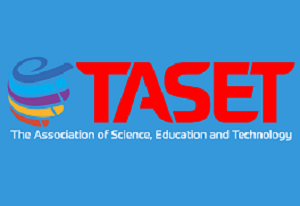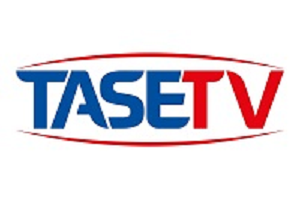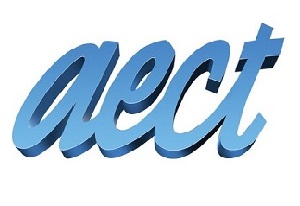TOJDEL - Volume 4 - Issue 2 - April 2016
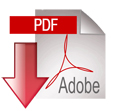 CELL (BIOLOGY)-WIKIPEDIA LEARNING PERFORMANCE IN RELATION TO COGNITIVE STYLES, LEARNING STYLES, AND SCIENCE ABILITY OF STUDENTS: A HIERARCHICAL MULTIPLE REGRESSION ANALYSIS
CELL (BIOLOGY)-WIKIPEDIA LEARNING PERFORMANCE IN RELATION TO COGNITIVE STYLES, LEARNING STYLES, AND SCIENCE ABILITY OF STUDENTS: A HIERARCHICAL MULTIPLE REGRESSION ANALYSIS Ananta Kumar Jena, Silpi Sandhya Gogoi, Monisha Deka
Abstract:
The present study assessed the effect of independent variables (i.e. cognitive style, science ability, learning styles, Wikipedia) on dependent variable (i.e. learning performance) in relationship with the independent variables (i.e. cognitive styles, science ability, & learning styles). For that purpose, the researchers randomly selected two English medium secondary schools in Silchar Town. Similarly, out of more than twenty-five secondary schools having five thousand students, the researcher randomly selected 10 students and assigned five students to the control group and five students to the experimental group to conduct the experiment. Non-Equivalent Pretest-Posttest Quasi Experimental Design based on Regression Analysis used and assessed the effect of independent variables. It was found that Learners’ cognitive styles (e.g., extraversion, sensing, thinking and judging) were hierarchical significant relationship with Wikipedia learning performance, but learners’ feeling has no significant relationship with Wikipedia learning performance.
 COLLEGE STUDENTS’ PERCEPTIONS OF ONLINE LEARNING: KNOWLEDGE GAIN AND COURSE EFFECTIVENESS
COLLEGE STUDENTS’ PERCEPTIONS OF ONLINE LEARNING: KNOWLEDGE GAIN AND COURSE EFFECTIVENESS Sachiko MATSUNAGA
Abstract:
This paper reports the results of research into college students’ perceptions of knowledge gain and reactions to their learning experiences in an online general education course. Statistical analyses on data from two types of questionnaires showed: (a) overall knowledge gain regardless of participants’ backgrounds (age, gender, and ethnicity), which was unrelated to their instructional preference; (b) overall preference for online to in-class environment regardless of participants’ backgrounds, except an age difference in rating on hypothetical in-class quizzes. Further quantitative analyses identified ease of participation and self-reflection as strengths of online delivery; these were together related to many important aspects of learning. These quantitative data were largely compatible with participants’ comments. Based on these findings, future studies are suggested, and possible ways to improve online course design and delivery are discussed.
 EXPLORING THE USE OF INFORMATION AND COMMUNICATIONS TECHNOLOGY (ICT) IN EDUCATION FOR ADOLESCENTS IN URBAN POVERTY
EXPLORING THE USE OF INFORMATION AND COMMUNICATIONS TECHNOLOGY (ICT) IN EDUCATION FOR ADOLESCENTS IN URBAN POVERTY Siti Hajar Halili, Hamidah Sulaiman
Abstract:
Information and Communications Technology (ICT) is a technology tool to help and facilitate communication and processing besides information delivery through electronic means. The life of adolescents in urban poverty communities is usually associated with society in poor urban communities. Many problems and challenges are faced by the urban poverty community from the aspect of using ICT in terms of educational aspects. Hence, the youth in urban poverty are recommended to take various initiatives in using ICT based tools given that ICT use is able to change their lifestyle and wellbeing.
 GIS FREEWARE AND GEOSCIENCE EDUCATION IN LOW RESOURCE SETTINGS
GIS FREEWARE AND GEOSCIENCE EDUCATION IN LOW RESOURCE SETTINGS Muhammad Nawaz, Farha Sattar
Abstract:
The development of Geographic Information System (GIS) has played very important role in understanding and communicating geoscience in the last couple of decades around the world. Now a days Geoscience teachers and students make extensive use of spatial data, spatial data base management, spatial data retrieval, visualization and spatial data analysis. GIS software tools are playing an important role in geoscience education and hence considered an integral part of geoscience teaching and learning. Commercial or proprietary GIS tools such as ENVI, ArcGIS and ERDAS are highly useful but despite of their demonstrated utility these tools have perceived problems in low resource settings. Commercial GIS software are often very expensive and highly complex for free available spatial data which is often low quality data. Free and open source software tools such GRASS, SAGA, ILWIS are now available which are impacting and have potential to impact further the geoscience education in low resource settings.
The aim of this paper is to enlist the available free and open source GIS software tools and present our experience with these tools to assist teachers at low budget institutes towards understanding the potential of GIS free and open source software tools in geoscience education in low resource settings. This paper also explores the possibility presented by the free and open source GIS software tools, provides categorizes and describes their use in geoscience education. Our search on the availability and utility of free and open source GIS tools reveals that for all categories of commercial and proprietary software used in geoscience education a free and/or open source tool is available. In low resource settings these free and open source tools have huge advantage over commercial and proprietary software tools because these tools are available without any cost and mostly fit for handling low quality freely available spatial data.
 MENTORING ONLINE DOCTORAL STUDENTS THROUGH A COMMUNITY OF PRACTICE MODEL
MENTORING ONLINE DOCTORAL STUDENTS THROUGH A COMMUNITY OF PRACTICE MODEL Barbara Yalof, Barry Chametzky
Abstract:
Numerous educational theorists have researched the question of why doctoral learners leave their programs and numerous hypotheses abound. Online doctoral learners have unique needs not always adequately addressed. As a result of these unmet needs, attrition in doctoral programs is alarmingly high nationwide. In this study, we examine one particular online community of practice (CoP) to understand more completely how and why, after four years of being in existence, it remains robust. Based on interviews and analysis of data, the authors have determined that three elements make the CoP so successful: camaraderie, commitment, and cognition. Within the sanctuary of this highly structured CoP, learners are free to ask questions of peer members and develop friendships. Members in the CoP are dedicated to learning and mastering a particular qualitative methodology and assist less-experienced students whenever possible. Established experts are invited to talk about various components of the methodology. These elements have far-reaching implications not only for the CoP in question but also for learners in other fields of study who wish to develop their own CoPs.
 PLANNING TO DESIGN MOOC? THINK FIRST!
PLANNING TO DESIGN MOOC? THINK FIRST! Alaa A. AlDahdouh, AntĂłnio J. OsĂłrio
Abstract:
Over the last years, educators have been forced to rethink about the whole education system. In 2005, Connectivism, a new learning theory, was emerged. Consequently, Massive Open Online Courses (MOOCs) have been presented as an alternative powerful educational system. Money was invested and tens of for-profit and non-profit companies involved in producing MOOC. However, integrating and adopting MOOC in educational institutions worldwide is still questionable. This literature review paper addressed and discussed the issues that higher education institutions should consider before adopting MOOC. The findings showed eight considerable, interrelated and controllable MOOC issues: high dropout rate, accreditation, business model, reputation, pedagogy, research ethics, student assessment and language barrier. Policy makers in higher education institutions should be aware of these issues before including MOOC in their development plans. In addition, the paper presented a number of possible future studies.
 THE DIALOGICAL AUTHENTIC NETLEARNING ACTIVITY (DIANA) MODEL FOR COLLABORATIVE KNOWLEDGE CONSTRUCTION IN MOOC
THE DIALOGICAL AUTHENTIC NETLEARNING ACTIVITY (DIANA) MODEL FOR COLLABORATIVE KNOWLEDGE CONSTRUCTION IN MOOC Sanna Ruhalahti, Anne-Maria Korhonen, Heli Ruokamo
Abstract:
The ways in which we work and learn are changing rapidly. These changes require research and competencies that are not only new, but which also respond to the requirements of the digital age. The extensive social phenomena and pressures that are a result of digitalisation also call for more careful consideration. Digitalisation requires us to renew educational structures. Massive open online courses (MOOC) and their associated pedagogical decisions can promote the development of digitalisation. Open online courses necessitate a stricter pedagogical structure that enables authentic learning and dialogue based on collaborative knowledge creation. This article presents a case study showing how the DIANA (Dialogical Authentic Netlearning Activity) pedagogical model was used to support collaborative knowledge construction in a micro open online course titled “Making learning personal”. A questionnaire and interviews were used to collect data from fourteen participants, and qualitative content analysis was used to analyse the data. Various phenomena of MOOCs are evident in the results, however, the results also reveal the challenges of dialogical, authentic learning and collaborative knowledge creation in an open online course. The results indicate that sufficient guidance is required to gain a thorough understanding of a pedagogical model, and that collaborative knowledge creation requires time, shared learning objectives, and a substantial knowledge of dialogical participation.

